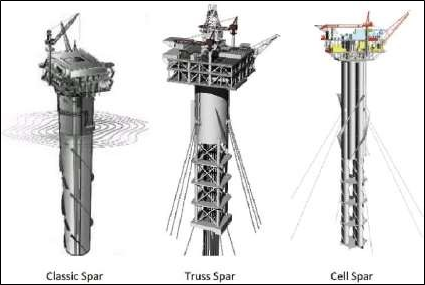ANALYSIS OF VERTICAL PLATE ON FLOW VELOCITY VARIATION IN SPAR KEEL
DOI:
https://doi.org/10.62012/sensistek.v5i2.24233Keywords:
Kata Kunci : SPAR, CFD, Plat Vertikal, Bentuk Aliran, Laju Aliran, Tekanan AliranAbstract
The progress of human civilization today is followed by an increasing demand to meet energy needs, including the need for oil and gas. SPAR (Single Point Anchor Reservoir) is one of the offshore floating structures that is suitable and efficient for use in deep waters for drilling, production, processing, storage and as a renewable power plant. SPAR Platform consists of a cylinder that floats vertically in the water. The natural period of SPAR structures deployed in the Gulf of Mexico generally has a natural period of 60 s for pitch. Vertical Plate can be an alternative solution to reduce rotational motion so that the SPAR system becomes more stable and functions more efficiently. The research method conducted in this study is a numerical calculation method using computational fluids dynamics (CFD) application. The most turbulence flow occurs at a speed variation of 0.1 m/s, so it is concluded that not always the largest flow velocity passing through the vertical plate will also occur a lot of turbulence flow. The simulated flow velocity after passing through the vertical plate will experience turbulence and the velocity decreases due to turbulence. Changes in speed that occur in simulations with 3 speed variations of 0.1 m/s, 1 m/s, and 10m/s have the same speed change ratio of 1.52. The greatest pressure occurs in the simulation on the vertical plate that is directly exposed to the turbulence.Downloads
References
Agarwal, A. K., & Jain, A. K. (2003). Dynamic behavior of offshore spar platforms under regular sea waves. 30, 487–516.
Farraz, M., & Rahayu, S. A. (2017). Analisis Aliran Fluida Pada Desain Awal Chamber Fluid Flow Analysis on Initial Design of Airborne Laboratory Sensor. 39–46.
Gemilang, G. M. (2012). Analisis Riser Interference Konfigurasi Steel Catenary Riser Pada Laut Dalam. 151.
Jain, A. K., & Agarwal, A. K. (2003). Dynamic analysis of offshore spar platforms. Defence Science Journal, 53(2), 211–219. https://doi.org/10.14429/dsj.53.2268
A. K. Yusim, B. Utomo, S. Suharto, dan H. Hartono, “Proses Perbaikan Plate Heat Exchanger Tipe M15 di PT. Janata Marina Indah (JMI) Semarang”, zonalaut, vol. 1, no. 1, hlm. 6-10, Mar 2020.
Syah, P. A. (2015). Analisa Aliran Fluida Pada Intake Manifold Mobil Esemka Standar dengan Intake Manifold Modifikasi Menggunakan CFD (Computational Fluid Dynamis)PADA SOFTWARE ANSYS 15.0.













